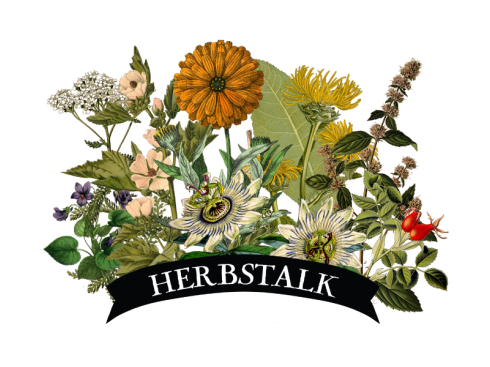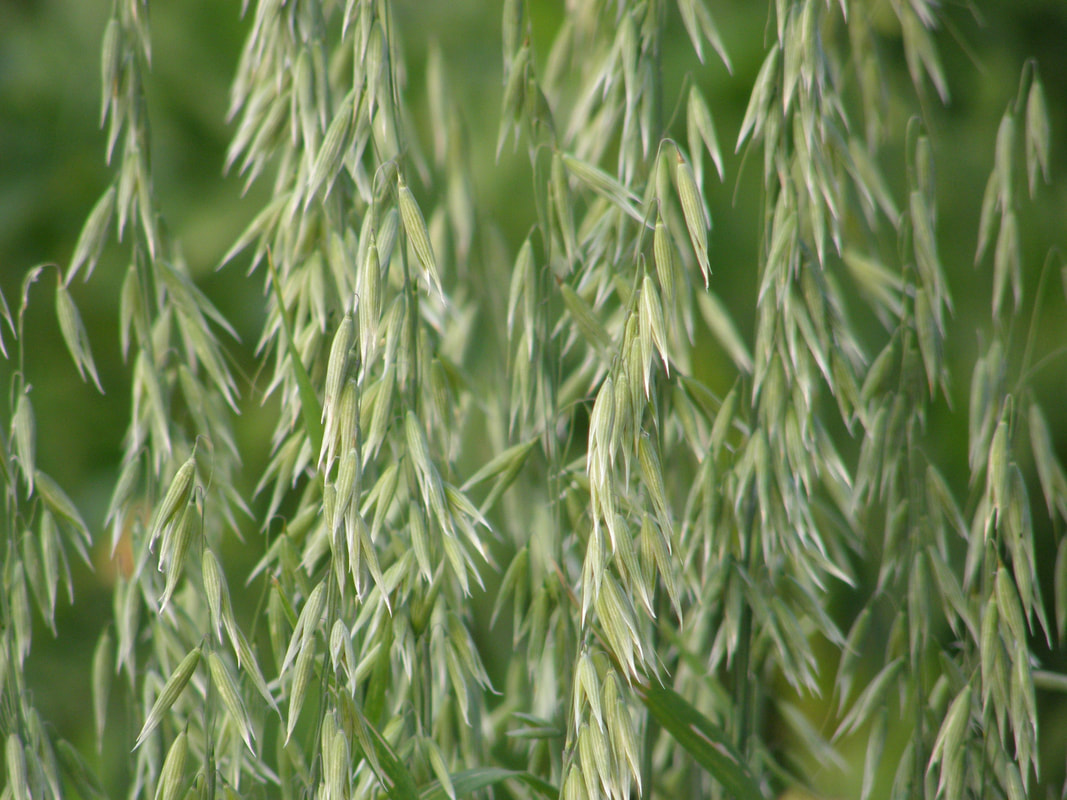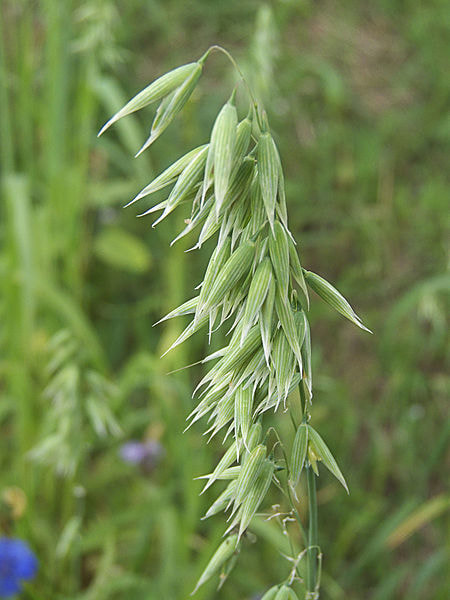|
by Juliette Abigail Carr of Old Ways Herbal Oat is a short-season, cool weather crop. Once the weather gets hot it does its baby-making thing and goes to seed, which means you missed the milky stage. Oat is direct-seeded as soon as the ground can be worked, which in my climate is April but for many people is March. I often plant oats the day I plant peas or soon after; the minimum soil temperature for germination is 45 degrees F, and in the mid 50’s you start to get poor germination and you’re likely to run out of time to get your oats to the milky stage before hot weather hits. Where to Plant Oats Cover Crop Oats make a great spring cover crop, so consider planting them in a spot that went weedy last year, or in an area new to cultivation. Oat is in the grass family (Poaceae) and it does reasonably well against all the nasty invasive grasses I’m always fighting to get out of the gardens. I think of it as an in-and-out crop, like peas or radishes, in that it’s there and gone before my heavy hitter crops like corn and tomatoes are even a twinkle in the season’s eye. Microclimate Oats are kind of tall so you can use them to create interesting microclimates for early season crops. I plant short-season Brassicas north of the oats, because it’s sunny when the weather is cool, and by the time the oats are tall enough to cast shade over the Brassicas, the weather is warm enough that without a little shade I’d be fretting about the broccoli bolting before it sets nice florets. Avoid this for the long-season Brassicas like cabbage and brussels sprouts because the oats will be cut down long before those crops are ready. Succession Planting Oat is a great tool for succession planting, as it lays down a beautiful nitrogen-rich weed-free layer of mulch for your hot season crops. I always plant my hottest hotties in the oat patch in June–last year it was watermelon, and let me tell you it was BEAUTIFUL not having to weed the watermelon. How to Plant Oats I recommend tilling the ground in the fall for a few reasons: 1. you can get your seed in the ground literally as early as possible in the spring, mud be damned; and 2. it buys your crop a head start against last year’s weed seeds, especially grass. If you didn’t till in the fall, know that you will most likely have to make a decision in March or April to either prep the bed by hand or wait until the ground dries out enough for the tiller–but then you’re gambling on the soil temperature for germination, which is often well into the high 50’s by the time the soil dries out, around here anyway. To prep the bed by hand, turn the soil with a shovel, weeding as you go; when the soil is as turned as it’s going to get, follow instructions below. 1. Before planting oats, use a scuffle hoe or stirrup hoe to make the soil as level and fine as you can get it, even if the soil was recently tilled. The more level and fine your soil is, the better your oats will germinate. If you don’t have the right hoe you can use a hard rake, but then please get yourself a good hoe with your tax refund. 2. Sow your seeds (sow your cultivated oats, I suppose!) by scattering them thickly across the surface of the soil using both hands or a seed spreader. The birds are going to eat some of your seeds, so really, spread them thick. 3. Use a hard rake or your hands to spread the oats as evenly as possible. 4. If you’re sowing a large area, walk across it gently to ensure good contact between the oats and the soil. If it’s a small area, you can pat them down with your hands. You don’t have to bury the oats, they’ll germinate just fine on the surface as long as they are pressed into the soil. Consider a scarecrow, bells, or old CD’s on strings to keep the birds out of the oats, although there’s a certain amount of seed that the seed-eaters will take as their due for their brethren who eat pest bugs, mice, rabbits, etc. and protect our gardens. Once I scared a fawn out of my oats, where her mother had hidden her for the day. That was neat, even with the crushed plants. Interested in making medicine with your Milky Oats? Read more here!
Join us this summer for the Medicinal Gardener Course: a season-long garden adventure, monthly Sundays starting in May on our organic farm & forest gardens! For more on making safe, delicious herbal remedies at home, come to the Home Medicine Maker Course, monthly Saturdays starting in May in our Botanical Sanctuary forest classroom! The Home Herbalist Course offers a deeper investigation of using herbal medicine to its utmost potential. One Sunday a month starting in May in our Botanical Sanctuary forest classroom! |
Archives
November 2023
Categories
All
|
Join the Newsletter!
Receive news about future Herbstalk events
Thank you!
You have successfully joined our subscriber list.
Copyright © Herbstalk 2024



 RSS Feed
RSS Feed